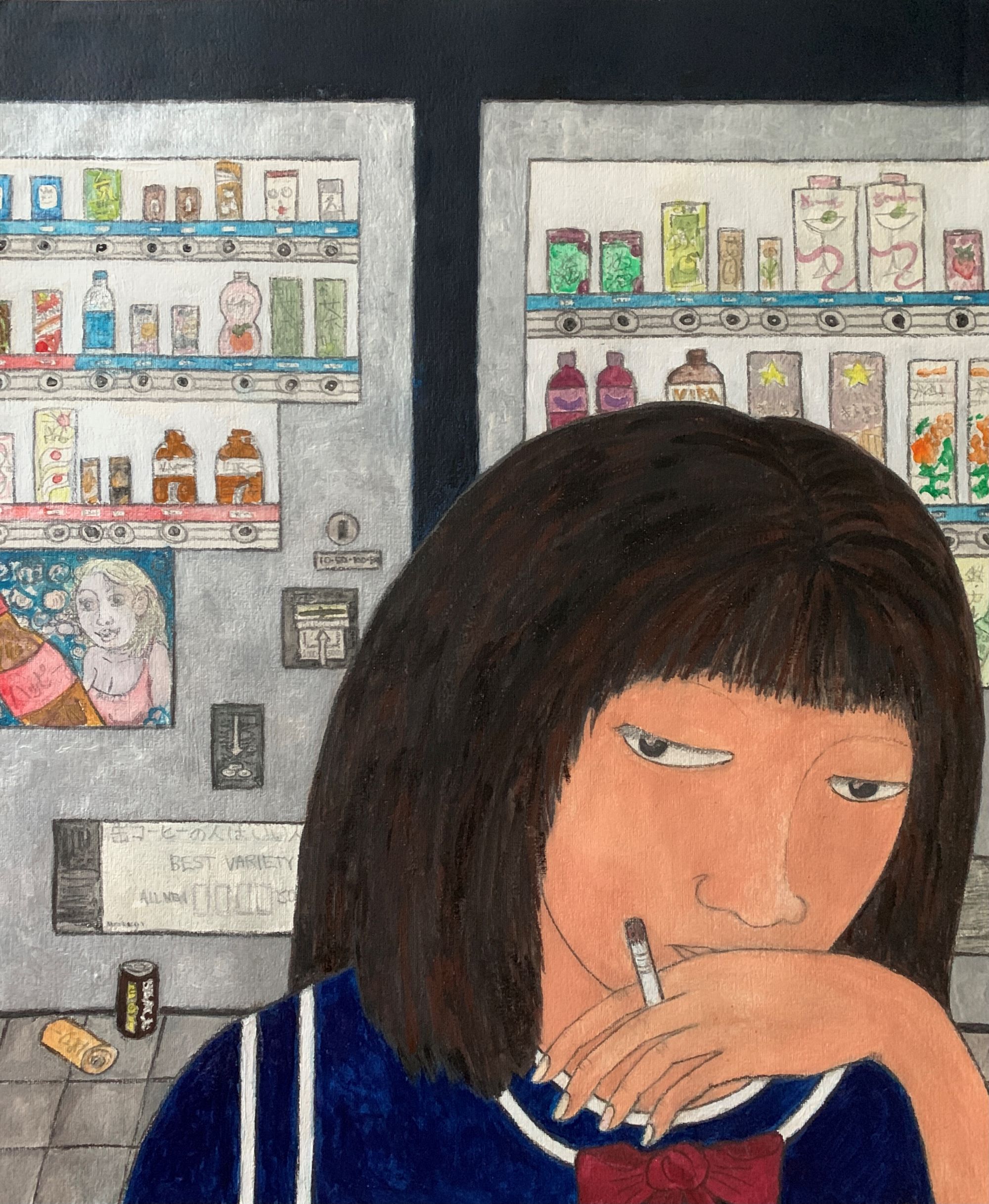
Shojo Smoking

Francesca Leader
3 Questions for Francesca
What was your process for creating this work?
I first tried to create this image almost 20 years ago, in 2004, while living near Tokyo, Japan as a student. My method is usually to start with a pencil sketch, then layer on gouache and/or acrylic paint, then go back to pencil again (sometimes brush pen) to outline and shade at the end. I'm not a perfectionist when it comes to my visual art because I simply can't be — I have neither the physical ability (I suffer from carpal tunnel syndrome) nor the technique — so I try to work within my limits and embrace flaws and limitations rather than fighting them. Sometimes a piece doesn't come out at all the way I'd hoped, and I find myself wishing I could ask a more technically-skilled artist to redo it for me. But, when my ability and my concept are well-matched (as with this piece), I feel I catch something of the aura of a Japanese woodblock print. I suppose the subject matter of this piece — a young Japanese girl — reinforces that aura, which may not be as palpable in much of my work. Anyway, version 1 of this piece was just too imperfect, even for me, so I chucked it. I did a second version, which I liked, but which was ruined by water damage somewhere along the way. I made a third pencil sketch in 2005 or 2006, which then sat around for a number of years in my portfolio until, finally, I buckled down and finished version 3 in 2021.
What is the significance of the medium you chose?
I enjoy working with gouache because it can behave like acrylic or like watercolor — it's mutable, flexible, and forgiving of errors (of which I make many). I'm also attracted to illustration and cartoon-style imagery, so that's why I prefer to finish my paintings with a pencil or ink outline rather than just leaving the paint to stand on its own.
What is the significance of this work to you?
To me, this work captures the resentment and hopelessness experienced by a lot of young Japanese women who feel undervalued in Japanese society. I think the glass ceiling in Japan isn't even really glass — it's more like a solid steel ceiling that everyone can see, but the men who put it there don't (of course) want to talk about it, and almost no woman can break through it. In my mind, the Japanese girl in this image is questioning whether or not she should bother existing in a culture that expects her to be either a sex object or a perfect wife and mother. I'm sure things have changed since I lived in Japan almost two decades ago, but I also know that Japan was ranked 116th out of 146 countries in the 2022 Global Gender Gap Report, so things can't have changed all that much.
Francesca Leader is interested in exploring the "edge" territories of the world in which cultures overlap, engendering an uncommon richness of thought that mirrors the biodiversity of ecological edges. Some edge territories are geographical places, but many others are contained within the bodies and minds of those who travel the world seeking to understand the unknown, and return changed. She thinks if anywhere, the edges are the places where we will find the seeds of our salvation.